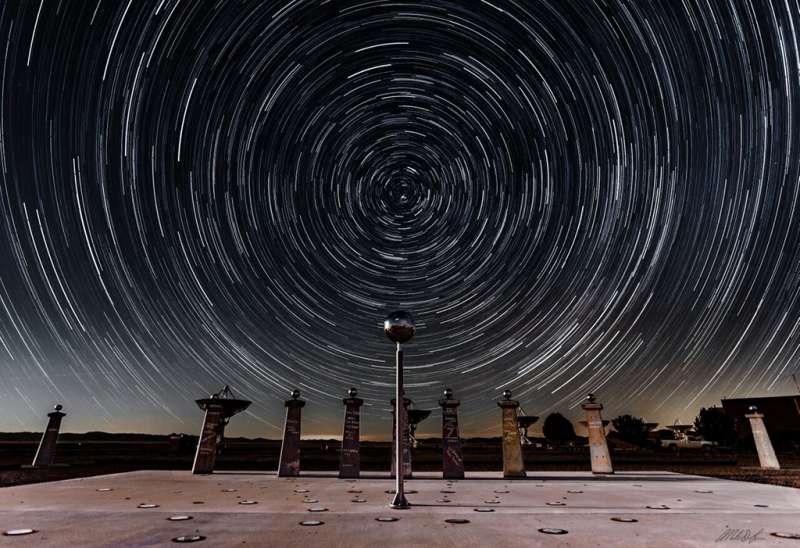Credit & Copyright: Miles Lucas at
NRAO
Explanation:
Sundials use
the location of a shadow to measure the Earth's rotation
and indicate the time of day.
So it's fitting that this sundial, at the
Very Large Array
Radio Telescope Observatory in New Mexico,
commemorates
the history of radio astronomy and radio astronomy pioneer
Ronald
Bracewell.
The radio sundial was constructed using pieces of a
solar mapping radio telescope array that Bracewell orginaly
built near the Stanford University campus.
Bracewell's array was used to contribute data to
plan the first Moon landing,
its pillars signed by visiting scientists
and radio astronomers, including two Nobel prize winners.
As for most sundials the shadow cast by the central gnomon follows
markers that show the solar time of day, along with solstices and equinoxes.
But markers on the radio sundial are also
laid out according to local
sidereal time.
They show the position of the invisible radio shadows
of three bright radio sources in Earth's sky, supernova remnant
Cassiopeia A,
active galaxy Cygnus A, and
active galaxy Centaurus A.
Sidereal time is just star time,
the Earth's rotation as measured with the stars and distant galaxies.
That rotation is reflected in this composited hour-long exposure.
Above the Bracewell Radio Sundial, the stars trace concentric trails
around the north celestial pole.
1999 2000 2001 2002 2003 2004 2005 2006 2007 2008 2009 2010 2011 2012 2013 2014 2015 2016 2017 2018 2019 2020 2021 2022 2023 2024 2025 |
Январь Февраль Март Апрель Май Июнь Июль Август Сентябрь Октябрь Ноябрь Декабрь |
NASA Web Site Statements, Warnings, and Disclaimers
NASA Official: Jay Norris. Specific rights apply.
A service of: LHEA at NASA / GSFC
& Michigan Tech. U.
|
Публикации с ключевыми словами:
солнечные часы
Публикации со словами: солнечные часы | |
|
См. также:
| |
